Evaluation of Subsidy Programmes
This research group focuses on two main research questions: (i) What is the causal effect of cooperative innovation activities on the performance of firms and regions? (ii) What are the causal effects of public Research and Development (R&D) support schemes on the performance of firms and regions? The first research question concerns the dynamics of firms and regions as a result of their different innovation activities. We apply a micro-based integrative perspective on innovative activities which allows identifying causal effects of cooperative activities on specific outcomes (e. g., patent applications, scientific publications, employment growth, or productivity growth). Concerning the second research question, recent studies mainly focus on the evaluation of one specific subsidy scheme. Research in this group aims to overcome this shortcoming by considering various support schemes. Indicators for the firms’ success are (amongst others) patent applications and employment growth. The results allow insights for the future design of innovation support schemes.
Centre for Evidence-based Policy Advice (IWH-CEP)
Research Cluster
Economic Dynamics and StabilityYour contact

Mitglied - Department Präsidialbereich
EXTERNAL FUNDING
09.2019 ‐ 09.2022
Establishing Evidence-based Evaluation Methods for Subsidy Programmes in Germany (EVA-KULT)
European Regional Development Fund (ERDF)
The project aims at expanding the Centre for Evidence-based Policy Advice at the Halle Institute for Economic Research (IWH-CEP).
01.2018 ‐ 12.2020
Networked growth - Innovative Saxony-Anhalt through digital business models (Competence Center 4.0)
Federal Ministry for Economic Affairs and Energy (BMWI)
01.2017 ‐ 12.2018
Political Participation in Eastern Germany
Federal Ministry for Economic Affairs and Energy (BMWI)
12.2015 ‐ 11.2018
Socio-economic Effects of Research on Innovative Approaches for POC Diagnostics
Federal Ministry of Education and Research (BMBF)
Part of the EXASENS project. Coordinated by the Leibniz Institute of Photonic Technology (IPHT) in Jena, nine Leibniz institutes are working together on researching point-of-care (POC) technology for the prediction and diagnosis of chronic inflammatory respiratory diseases. See press release.
02.2017 ‐ 02.2018
The Importance of Non-University Research Institutions for the Development of Firms and Regions (Be_For_Reg-Projekt)
Federal Ministry of Education and Research (BMBF)
01.2015 ‐ 12.2016
Evaluation of the "Joint Task 'Improving the Regional Economic Structure'" in the Federal State of Saxony-Anhalt
Investitionsbank Sachsen-Anhalt
Refereed Publications
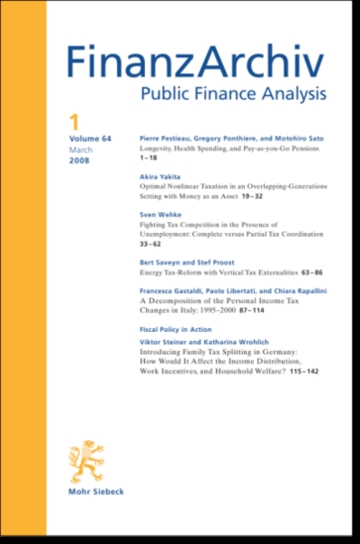
The Efficiency of Local Public-service Production: The Effect of Political Institutions
in: FinanzArchiv, No. 2, 2018
Abstract
Reforms replacing municipal cooperations by centralized municipalities often aim at increasing municipal efficiency. Empirical evidence supporting this aim, however, is ambiguous. Our paper analyzes the effect of institutions on municipal efficiency. In particular, we distinguish two archetypal institutional settings, a centralized and a confederal one, and argue that bureaucrats in a centralized setting are able to increase the fiscal residual. Our empirical test case is the German federal state of Saxony-Anhalt. We test the effect of the institutional setup using the bootstrap approach suggested by Simar and Wilson (2007), concluding that a decentralized institutional setting improves the efficiency of municipal production.
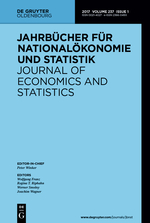
Public Investment Subsidies and Firm Performance – Evidence from Germany
in: Jahrbücher für Nationalökonomie und Statistik, No. 2, 2018
Abstract
This paper assesses firm-level effects of the single largest investment subsidy programme in Germany. The analysis considers grants allocated to firms in East German regions over the period 2007 to 2013 under the regional policy scheme Joint Task ‘Improving Regional Economic Structures’ (GRW). We apply a coarsened exact matching (CEM) in combination with a fixed effects difference-in-differences (FEDiD) estimator to identify the effects of programme participation on the treated firms. For the assessment, we use administrative data from the Federal Statistical Office and the Offices of the Länder to demonstrate that this administrative database offers a huge potential for evidence-based policy advice. The results suggest that investment subsidies have a positive impact on different dimensions of firm development, but do not affect overall firm competitiveness. We find positive short- and medium-run effects on firm employment. The effects on firm turnover remain significant and positive only in the medium-run. Gross fixed capital formation responses positively to GRW funding only during the mean implementation period of the projects but becomes insignificant afterwards. Finally, the effect of GRW-funding on labour productivity remains insignificant throughout the whole period of analysis.
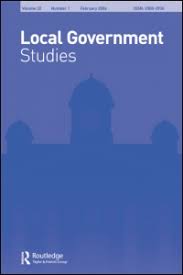
Does Intermunicipal Cooperation Increase Efficiency? A Conditional Metafrontier Approach for the Hessian Wastewater Sector
in: Local Government Studies, No. 1, 2018
Abstract
This paper analyses the relationship between intermunicipal cooperation and efficiency of public service provision. Organisational arrangements of public service production, including self-provision, joint provision or contracting, affect incentives and internal transaction costs. Hence, cooperation gains from scale effects need to be balanced against technical inefficiencies. We analyse relative efficiency of wastewater disposal for German municipalities. We employ a conditional analysis in conjunction with a metafrontier approach to calculate relative efficiency measures and technology gap ratios controlling for organisational arrangements and further environmental variables. Jointly providing municipalities and contractor municipalities exhibit lower technical efficiency than self-providing and contracting municipalities. As confirmed by previous research, scale effects from cooperation and contracting apply to small municipalities primarily.
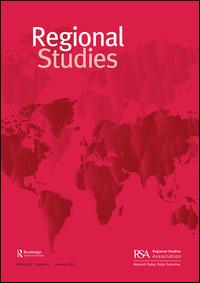
R&D Collaborations and the Role of Proximity
in: Regional Studies, No. 12, 2017
Abstract
R&D collaborations and the role of proximity. Regional Studies. This paper explores the impact of proximity measures on knowledge exchange measured by granted research and development (R&D) collaboration projects in German NUTS-3 regions. The results are obtained from a spatial interaction model including eigenvector spatial filters. Not only geographical but also other forms of proximity (technological, organizational and institutional) have a significant influence on the emergence of collaborations. Furthermore, the results suggest interdependences between proximity measures. Nevertheless, the analysis does not show that other forms of proximity may compensate for missing geographical proximity. The results indicate that (subsidized) collaborative innovation activities tend to cluster.
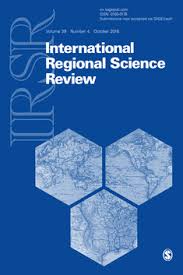
Benchmark Value-added Chains and Regional Clusters in R&D-intensive Industries
in: International Regional Science Review, No. 5, 2017
Abstract
Although the phase of euphoria seems to be over, policy makers and regional agencies have maintained their interest in cluster policy. Modern cluster theory provides reasons for positive external effects that may accrue from interaction in a group of proximate enterprises operating in common and related fields. Although there has been some progress in locating clusters, in most cases only limited knowledge on the geographical extent of regional clusters has been established. In the present article, we present a hybrid approach to cluster identification. Dominant buyer–supplier relationships are derived by qualitative input–output analysis from national input–output tables, and potential regional clusters are identified by spatial scanning. This procedure is employed to identify clusters of German research and development-intensive industries. A sensitivity analysis reveals good robustness properties of the hybrid approach with respect to variations in the quantitative cluster composition.














